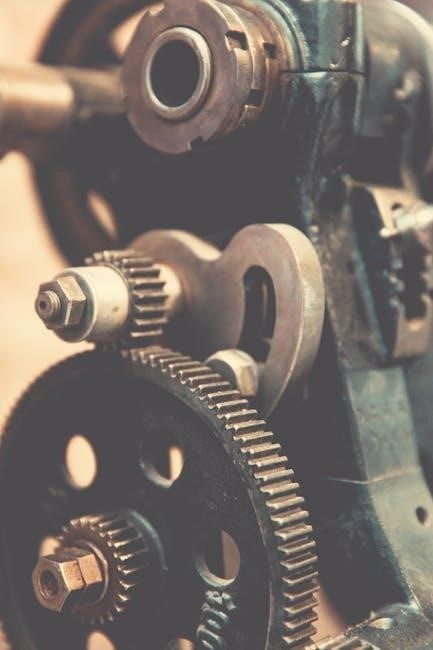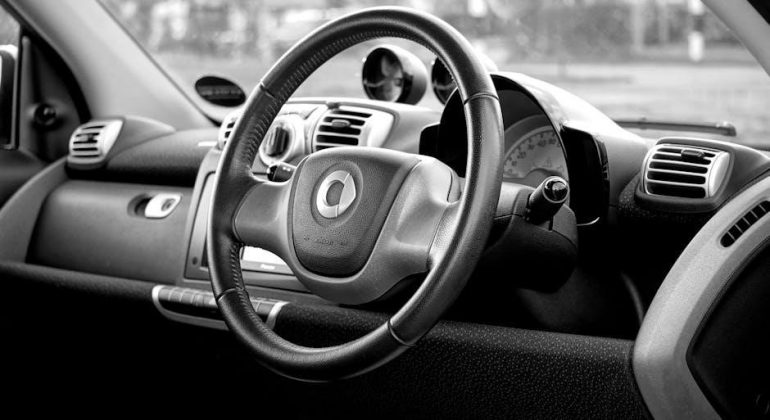The Wheel of Power and Privilege is a transformative tool designed to visualize and explore the intricate dynamics of power, privilege, and identity. It helps individuals and groups reflect on how societal structures and personal identities intersect, influencing experiences of oppression and advantage. By engaging with this framework, users can gain deeper insights into systemic inequalities and their own roles within these systems, fostering accountability and equity in various contexts.
1.1 Definition and Purpose
The Wheel of Power and Privilege is a visual framework designed to explore how power and privilege operate across various social identities. It defines privilege as unearned advantages granted to certain groups, often perpetuating systemic inequalities. The tool’s purpose is to help individuals and groups recognize and reflect on their positions within societal structures. By mapping identities such as race, class, gender, and disability, the wheel fosters self-awareness and dialogue about how these categories intersect to create experiences of marginalization or advantage. Its ultimate goal is to promote equity by encouraging personal growth and systemic change.
1.2 Key Concepts: Power, Privilege, and Identity
Power refers to the ability to influence outcomes and access resources, often shaped by societal structures. Privilege denotes unearned advantages granted to certain groups, reinforcing inequalities. Identity encompasses various social categories like race, gender, and class, which intersect to shape individual experiences. These concepts are interconnected, with power and privilege often determining how identities are perceived and treated. Understanding these dynamics is crucial for addressing systemic inequities and fostering inclusivity. By examining how power, privilege, and identity intersect, individuals can better navigate and challenge the systems that perpetuate marginalization and exclusion.

Components of the Wheel of Power and Privilege
The wheel includes social identity categories like race, class, gender, and disability, along with the spectrum of privilege and marginalization, highlighting how these elements intersect and influence experiences.
2.1 Social Identity Categories (Race, Class, Gender, Disability, etc.)
Social identity categories form the foundation of the Wheel of Power and Privilege, encompassing race, class, gender, disability, and more. These categories are interconnected and shape individual experiences of privilege and marginalization. Race influences societal perceptions and access to resources, while class impacts economic stability and opportunities. Gender and disability further intersect, creating unique experiences of inclusion or exclusion. Recognizing these categories helps individuals understand how their identities position them within the broader spectrum of power and privilege, fostering empathy and equity in diverse settings.
2.2 The Spectrum of Privilege and Marginalization
The spectrum of privilege and marginalization highlights how individuals experience varying levels of access and exclusion based on their social identities. Those closer to the center of the Wheel of Power and Privilege hold more privilege, often benefiting from systemic advantages. Conversely, those on the margins face greater exclusion and barriers. This continuum underscores the fluidity of power dynamics, where individuals may experience both privilege and marginalization simultaneously across different aspects of their identity. Understanding this spectrum is crucial for addressing systemic inequalities and fostering inclusive environments.

How to Use the Wheel of Power and Privilege
The Wheel of Power and Privilege is a tool for reflection and dialogue, helping individuals and groups explore their identities and systemic inequalities, fostering accountability and equity.
3.1 Step-by-Step Guide to Reflection and Analysis
Begin by identifying your social identities, such as race, class, gender, and disability, and locate them on the Wheel of Power and Privilege. Reflect on how these identities intersect and influence your experiences of privilege or marginalization. Consider historical and systemic contexts that shape these dynamics. Engage in self-inquiry about how your positions may impact others and societal structures. Document insights and areas for growth, fostering a deeper understanding of power imbalances. This process encourages personal accountability and empathy, aiding in the development of inclusive practices and equitable relationships.
3.2 Facilitating Group Discussions and Workshops
Begin by creating a safe and respectful environment, establishing ground rules for open dialogue. Introduce the Wheel of Power and Privilege, explaining its purpose as a tool for reflection and understanding. Guide participants through group reflections, using prompts to explore how power and privilege impact their lives and interactions. Encourage sharing of personal experiences and active listening to foster empathy. Use case studies or scenarios to illustrate systemic inequalities and their effects. Conclude with actionable steps, empowering participants to apply their insights in real-world contexts, promoting equity and inclusive practices in their communities and organizations.

Applications of the Wheel in Different Contexts
The Wheel of Power and Privilege is widely applied in education, healthcare, and workplace settings to promote equity, inclusion, and systemic change, fostering understanding and dialogue across diverse groups and industries.
4.1 Education and Classroom Settings
In educational environments, the Wheel of Power and Privilege serves as a vital tool for fostering inclusive classrooms and promoting equity. Educators can use the framework to help students identify and reflect on their social identities, such as race, class, gender, and disability, and how these intersect to influence their experiences. By incorporating the wheel into lesson plans, teachers can create spaces for open dialogue about privilege and oppression, encouraging empathy and understanding. This approach not only enhances students’ self-awareness but also equips them with the skills to address systemic inequalities in their communities. Additionally, the wheel can be integrated into subjects like history, literature, and social studies to provide a more nuanced exploration of power dynamics. This leads to a more inclusive and socially conscious learning environment, preparing students to navigate diverse perspectives and advocate for justice.
4.2 Healthcare and Social Services
In healthcare and social services, the Wheel of Power and Privilege is a powerful framework for addressing systemic inequalities and improving patient outcomes. Providers can use the wheel to recognize how their own identities and biases may impact care delivery, fostering a more equitable and culturally sensitive approach. By examining the intersections of race, class, disability, and other social identities, healthcare professionals can better understand the unique challenges faced by marginalized groups. This tool also helps organizations develop policies that address disparities in access to resources and treatment, ensuring that all individuals receive fair and compassionate care. Ultimately, the wheel promotes a more inclusive and just healthcare system, where patient needs are met with dignity and respect, regardless of their background.
4.3 Workplace and Organizational Development
The Wheel of Power and Privilege is a valuable resource for workplace and organizational development, helping to identify and address systemic inequities. By analyzing how power dynamics and privilege impact employees, organizations can create more inclusive environments. The wheel highlights how factors like race, gender, class, and disability influence career advancement and workplace experiences. It encourages leaders to implement policies that promote equity, such as diversity training and bias reduction strategies. This tool also fosters open conversations about privilege and oppression, empowering employees to advocate for change. Ultimately, it helps organizations build a culture of accountability and inclusion, driving long-term success and employee satisfaction.

Case Studies and Real-World Examples
Real-world examples illustrate how individuals and organizations have used the Wheel of Power and Privilege to navigate systemic inequalities and foster inclusive change. Through personal stories and organizational transformations, these case studies provide practical insights into addressing privilege and oppression, highlighting the tool’s effectiveness in driving meaningful societal impact.
5.1 Individual Experiences with Power and Privilege
Individuals often use the Wheel of Power and Privilege to reflect on their personal identities and societal influences. By examining their positions within the wheel, people gain clarity on how power and privilege shape their experiences. Many share stories of recognizing unseen advantages or facing systemic barriers. For instance, some individuals have reported heightened awareness of mental health impacts tied to their identities. These personal reflections often lead to transformative realizations, empowering individuals to address inequalities in their lives and communities. The tool’s visual nature makes complex concepts accessible, fostering deeper understanding and accountability.
5.2 Organizational Transformations Using the Wheel
Organizations have effectively harnessed the Wheel of Power and Privilege to drive systemic change and foster equity. By identifying structural barriers and privilege imbalances, organizations can develop targeted strategies to address inequality. Many institutions use the wheel to facilitate dialogue and training, empowering employees to recognize and challenge biases. For example, some organizations have integrated the wheel into diversity and inclusion programs, leading to more equitable policies and practices. These efforts often result in enhanced collaboration, improved employee well-being, and stronger community engagement. The tool’s clarity and accessibility make it a valuable asset for organizational transformation and growth.

Intersectionality and the Wheel of Power
The Wheel of Power and Privilege seamlessly integrates intersectionality, enabling users to explore how multiple identities intersect and influence experiences of privilege and marginalization, fostering deeper understanding and promoting equity.
6.1 Understanding Intersectional Identities
Intersectional identities refer to the overlapping social categories that define an individual’s experiences, such as race, gender, class, disability, and citizenship. These identities are not isolated but interact, creating unique forms of privilege and marginalization. The Wheel of Power and Privilege visualizes this complexity, helping users recognize how different identities can either amplify or mitigate power dynamics. By examining these intersections, individuals gain a deeper understanding of how systemic inequalities are experienced differently by diverse groups, fostering empathy and inclusive action in personal and organizational contexts. This framework emphasizes the importance of considering multiple dimensions of identity in equity work.
6.2 Addressing Systemic Inequalities
The Wheel of Power and Privilege is a powerful tool for addressing systemic inequalities by identifying and challenging the structures that perpetuate them. It encourages individuals and organizations to recognize how privilege and marginalization are distributed across different social identities. By analyzing these dynamics, the framework provides a roadmap for creating inclusive policies and practices. It emphasizes the importance of active accountability, allyship, and advocacy to dismantle systems of oppression. Through this lens, users can develop targeted strategies to promote equity and justice in various sectors, fostering a more equitable society for all.

Reflection and Action: Moving Forward
Reflection and action are vital for personal and societal change. Understanding your position on the Wheel of Power and Privilege fosters self-awareness and accountability, enabling intentional steps toward equity and justice.
7.1 Personal Growth and Accountability
Personal growth and accountability are essential for navigating the complexities of power and privilege. By reflecting on your position within the Wheel of Power and Privilege, you can identify areas where your identities grant you advantage or marginalization. This self-awareness fosters humility and empathy, encouraging you to take responsibility for how your actions impact others. Journaling or engaging in mindful practices can deepen this process, helping you recognize patterns of behavior that may perpetuate inequality. Accountability involves committing to change, such as amplifying marginalized voices or challenging harmful systems. Through continuous learning and a willingness to make amends, personal growth becomes a lifelong journey toward equity and justice.
7.2 Advocacy and Allyship in Practice
Advocacy and allyship are critical actions stemming from understanding power and privilege. The Wheel of Power and Privilege serves as a tool to educate individuals on systemic inequalities, empowering them to advocate for marginalized communities. Effective allyship involves using one’s privilege to amplify voices, challenge oppressive systems, and support equitable policies. Active listening, education, and consistent action are key. By fostering inclusive spaces and engaging in respectful dialogue, individuals can contribute to dismantling systemic barriers. This practice ensures that advocacy is not performative but transformative, driving meaningful change toward justice and equity for all.
Resources for Further Learning
Explore the Decolonize Your Practice curriculum, toolkits, and the Wheel of Power and Privilege PDF for deeper insights into equity, inclusion, and systemic change strategies.
8.1 Recommended Reading and References
Key resources include the Decolonize Your Practice curriculum and the Wheel of Power and Privilege PDF, offering comprehensive insights into equity and systemic change. Explore works by M. Hilliard and N.N. Kellam, which delve into intersections of identity, power, and health disparities. Toolkits like See Different provide practical strategies for inclusion in education and workplaces. Additionally, refer to UN Women resources on intersectionality and gender-responsive budgeting. These materials empower users to deepen their understanding and apply the framework effectively in various contexts, fostering meaningful change and equity.
8.2 Additional Tools and Frameworks
Beyond the Wheel of Power and Privilege, explore complementary tools like the Power Flower Activity, which maps areas of privilege and marginalization. The WISE Toolkit offers practical strategies for equity in education and workplaces. Additionally, the Intersectionality Wheel and Gender-Responsive Budgeting Framework provide deeper insights into systemic inequalities. These resources enhance understanding of power dynamics and support meaningful change. Use these tools alongside the Wheel to create a holistic approach to equity, fostering inclusive environments in education, healthcare, and organizations.
